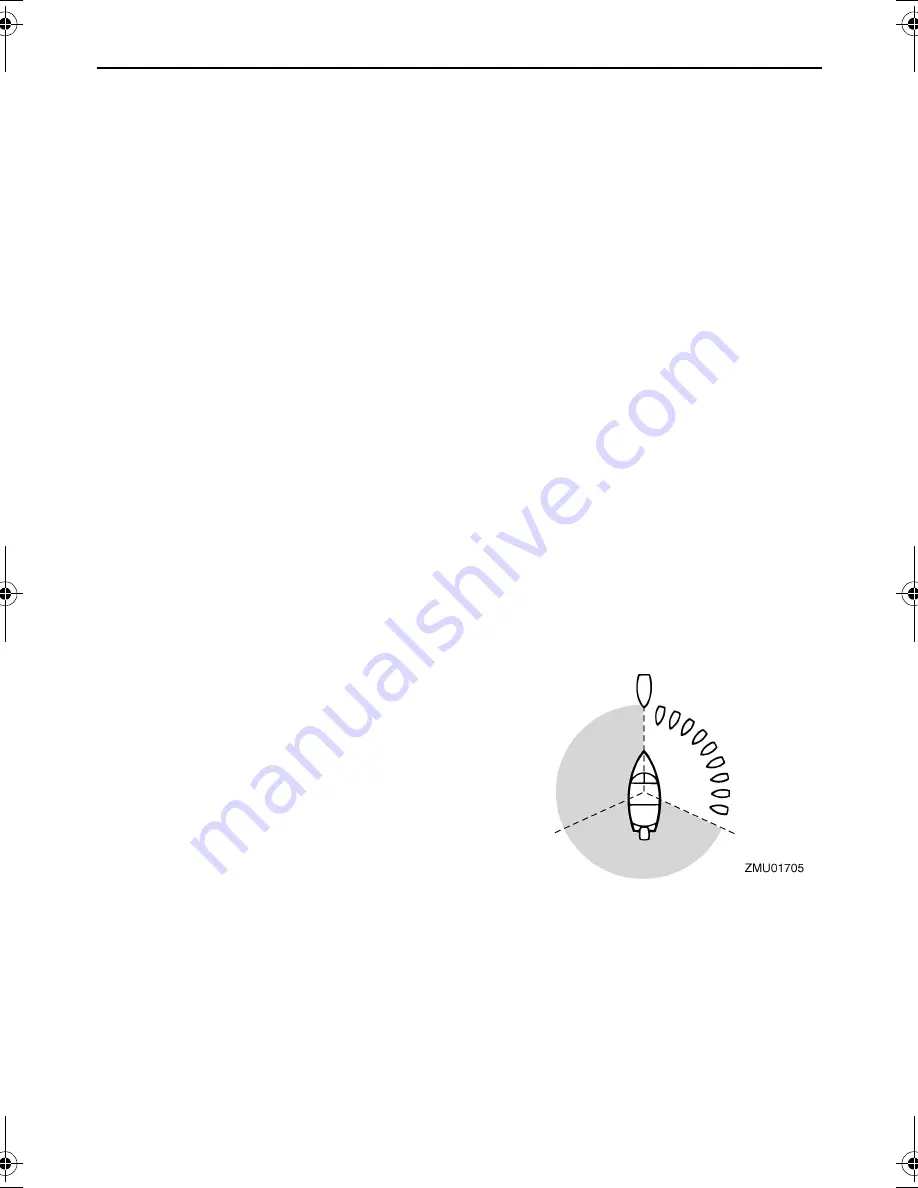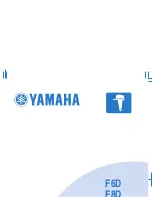
General information
5
Motor Vehicles for a complete set of rules
governing the waters in which you will be us-
ing your boat.
EMU25510
Steering and sailing rules and sound
signals
Whenever two vessels on the water meet one
another, one vessel has the right-of-way; it is
called the “stand-on” vessel. The vessel
which does not have the right-of-way is called
the “give-way” or “burdened” vessel. These
rules determine which vessel has the right-of-
way, and what each vessel should do.
Stand-on vessel
The vessel with the right-of-way has the duty
to continue its course and speed, except to
avoid an immediate collision. When you main-
tain your direction and speed, the other vessel
will be able to determine how best to avoid
you.
Give-way vessel
The vessel which does not have the right-of-
way has the duty to take positive and timely
action to stay out of the way of the Stand-On
vessel. Normally, you should not cross in front
of the vessel with the right-of-way. You should
slow down or change directions briefly and
pass behind the other vessel. You should al-
ways move in such a way that the operator of
the other vessel can see what you are doing.
“The general prudential rule”
This rule is called Rule 2 in the International
Rules and says,
“In obeying and construing these rules due re-
gard shall be had to all dangers of navigation
and collision, and to any special circumstanc-
es, which may render a departure from the
above rules necessary in order to avoid im-
mediate danger.”
In other words, follow the standard rules ex-
cept when a collision will occur unless both
vessels try to avoid each other. If that is the
case, both vessels become “Give-Way” ves-
sels.
EMU25520
Rules when encountering vessels
There are three main situations which you
may encounter with other vessels which could
lead to a collision unless the Steering Rules
are followed:
Meeting:
(you are approaching another ves-
sel head-on)
Crossing:
(you are traveling across the other
vessel’s path)
Overtaking:
(you are passing or being
passed by another vessel)
In the following illustration, your boat is in the
center. You should give the right-of-way to
any vessels shown in white area (you are the
Give-Way vessel). Any vessels in the shaded
area must yield to you (they are the Give-Way
vessels). Both you and the meeting vessel
must alter course to avoid each other.
Meeting
If you are meeting another power vessel head
on, and are close enough to run the risk of col-
lision, neither of you has the right-of-way!
Both of you should alter course to avoid an ac-
cident. You should keep the other vessel on
63P10.book Page 5 Tuesday, May 13, 2003 10:23 AM
Содержание F150C
Страница 1: ...F150C ...
Страница 2: ...ZMU01690 Read this owner s manual carefully before operating your outboard motor ...
Страница 73: ...Consumer information 67 EMU29810 Important warranty information for U S A and Canada ...
Страница 74: ...Consumer information 68 ...
Страница 76: ...Consumer information 70 ...
Страница 77: ...Consumer information 71 EMU29840 IMPORTANT WARRANTY INFORMATION IF YOU USE YOUR YAMAHA OUTSIDE U S A OR CANADA ...
Страница 78: ......
Страница 80: ...PLACE POSTAGE HERE ATTN WARRANTY DEPARTMENT ...












































